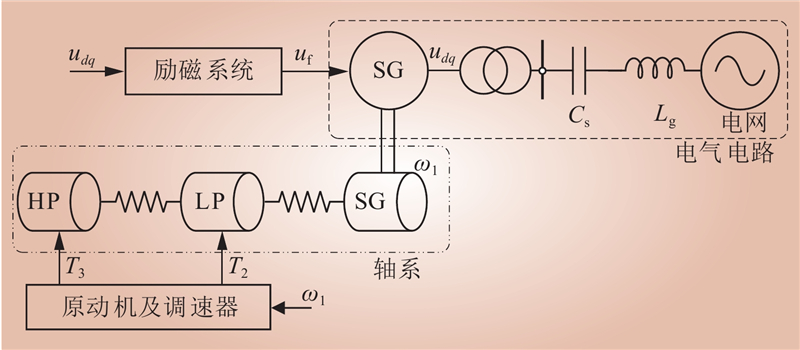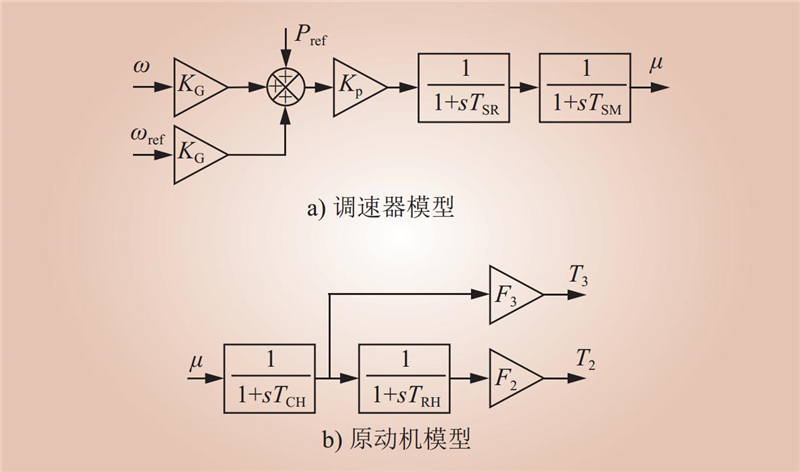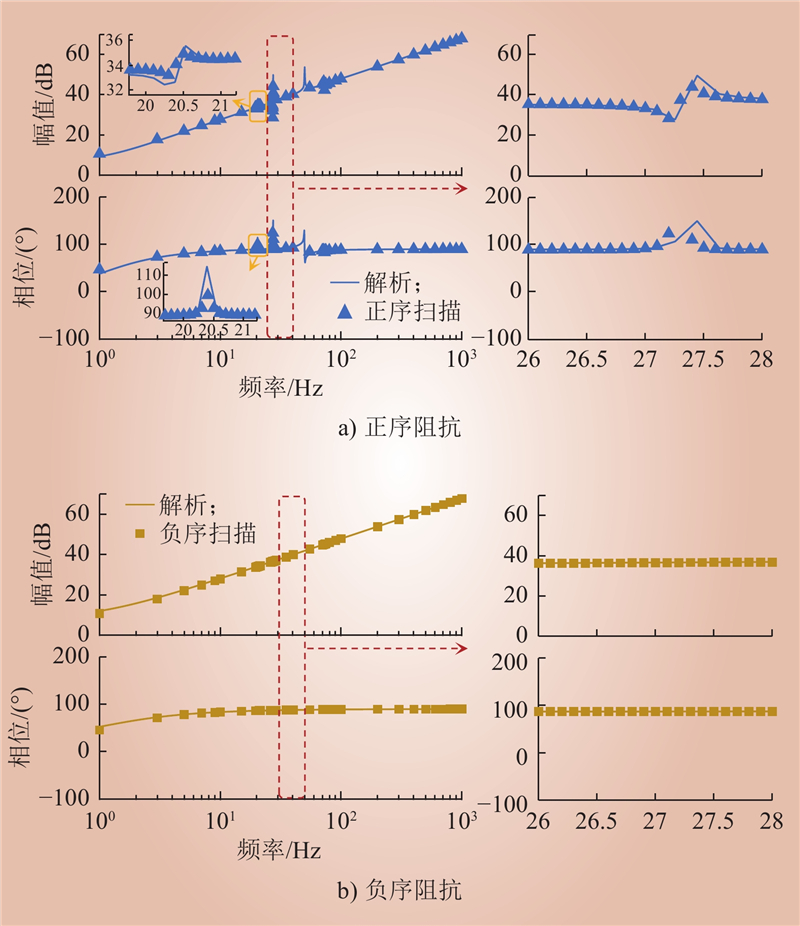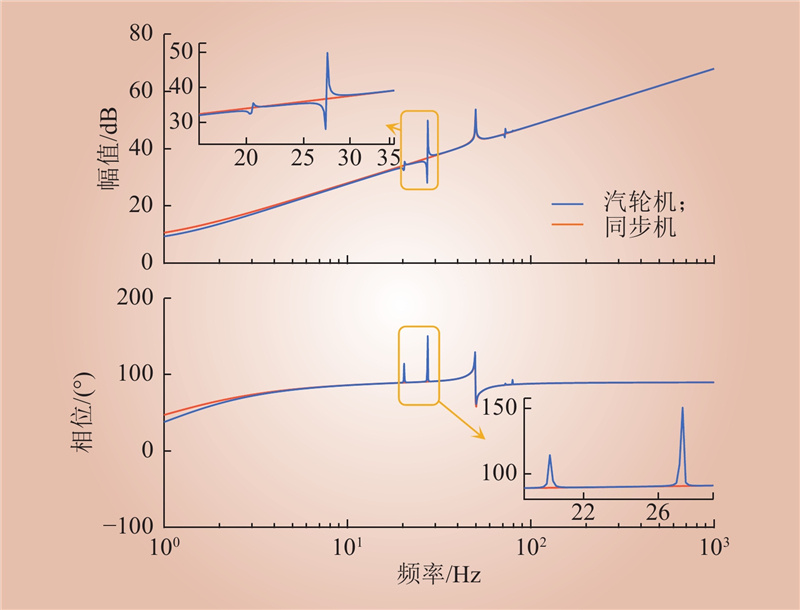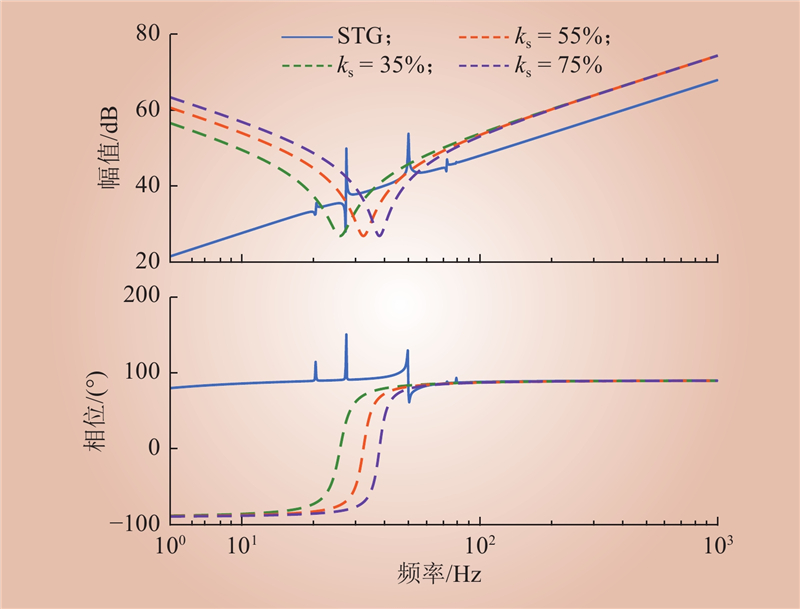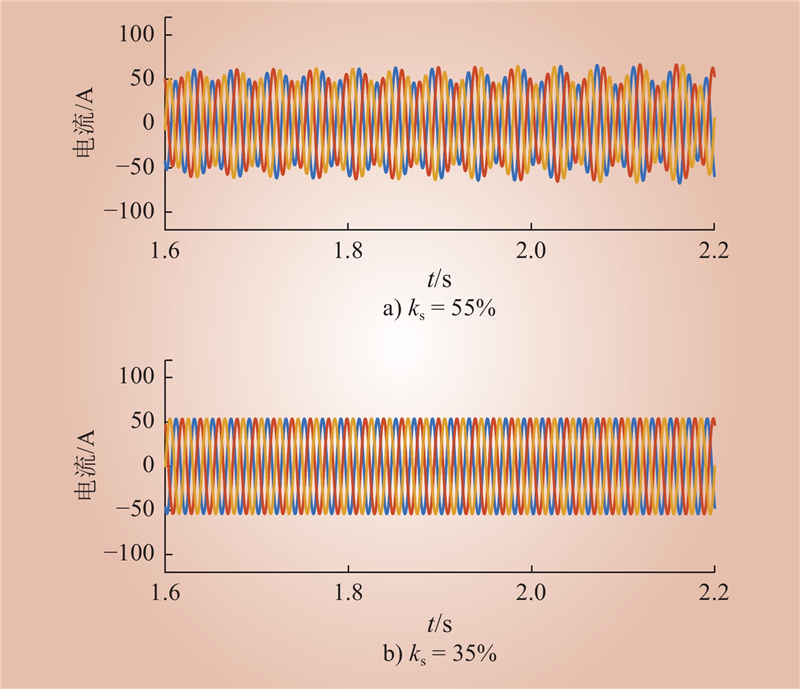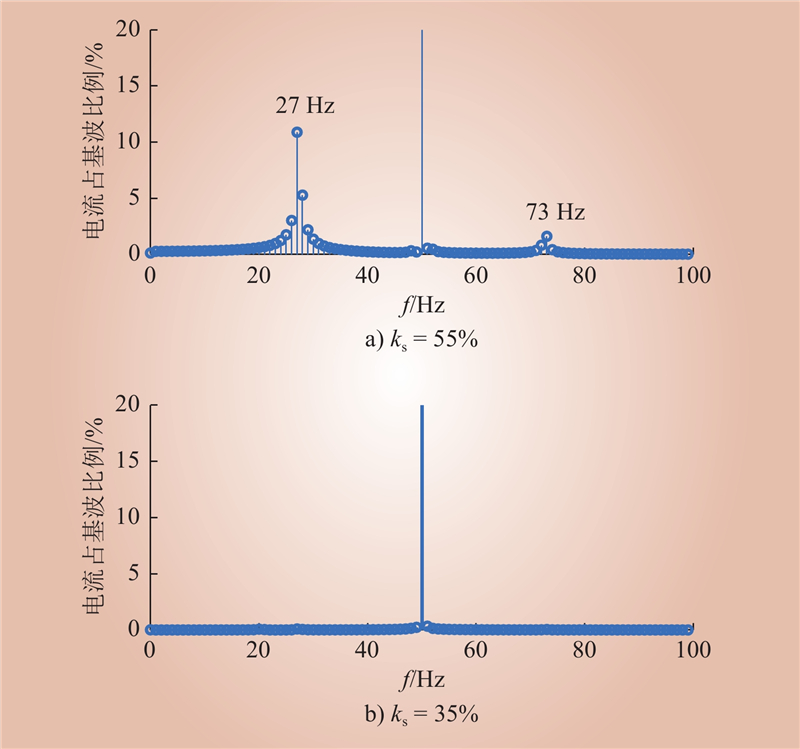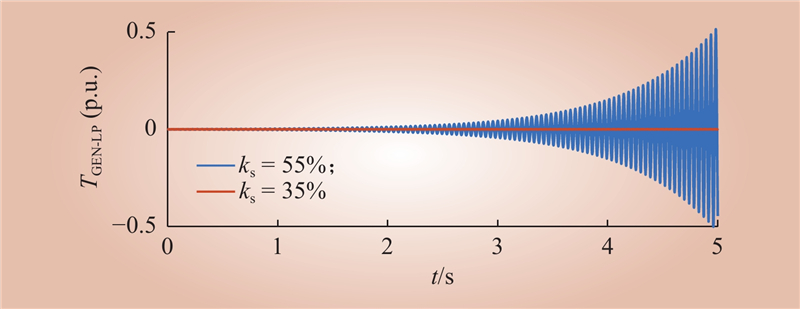| 1 |
李博浩, 郭昆丽, 吕家君, 等. 弱电网下改进LADRC抑制直驱风机次同步振荡研究[J]. 中国电力, 2023, 56 (4): 56- 67.
|
|
LI Bohao, GUO Kunli, LV Jiajun, et al. Inhibition of subsynchronous oscillation of direct-drive wind turbine by improved LADRC in weak grids[J]. Electric Power, 2023, 56 (4): 56- 67.
|
| 2 |
蔡维正, 郭昆丽, 刘璐雨, 等. 基于一阶LADRC控制的直驱风机次同步振荡抑制策略[J]. 中国电力, 2022, 55 (4): 175- 184.
|
|
CAI Weizheng, GUO Kunli, LIU Luyu, et al. Subsynchronous oscillation mitigation strategy based on first-order LADRC for direct-drive wind turbines[J]. Electric Power, 2022, 55 (4): 175- 184.
|
| 3 |
陈作舟, 余浩, 王盼盼, 等. 海上风电集群与火电打捆外送系统短路比定义及影响因素分析[J]. 发电技术, 2022, 43 (2): 207- 217.
|
|
CHEN Zuozhou, YU Hao, WANG Panpan, et al. Definition and influencing factors of short-circuit ratio between offshore wind power cluster and thermal power bundling system[J]. Power Generation Technology, 2022, 43 (2): 207- 217.
|
| 4 |
张帆, 尹聪琦, 袁豪, 等. 风电-柔直系统次同步振荡的耦合阻抗模型分析[J]. 南方电网技术, 2022, 16 (3): 24- 31.
|
|
ZHANG Fan, YIN Congqi, YUAN Hao, et al. Impedance coupling model based sub-synchronous oscillation analysis of wind farms connected to VSC-HVDC transmission system[J]. Southern Power System Technology, 2022, 16 (3): 24- 31.
|
| 5 |
李长宇, 刘博昊, 肖仕武, 等. 基于功率外环附加阻尼控制的柔性直流抑制送端火电机组次同步振荡研究[J]. 电力科学与技术学报, 2024, 39 (2): 20- 27, 73.
|
|
LI Changyu, LIU Bohao, XIAO Shiwu, et al. Research on subsynchronous oscillation suppression of flexible HVDC with thermal power units based on external loop damping control[J]. Journal of Electric Power Science and Technology, 2024, 39 (2): 20- 27, 73.
|
| 6 |
First benchmark model for computer simulation of subsynchronous resonance[J]. IEEE Transactions on Power Apparatus and Systems, 1977, 96(5): 1565–1572.
|
| 7 |
倪以信. 动态电力系统的理论和分析[M]. 北京: 清华大学出版社, 2002.
|
| 8 |
LARSEN E V, BAKER D H. Series compensation operating limits - A new concept for subsynchronous resonance stability analysis[J]. IEEE Transactions on Power Apparatus and Systems, 1980, PAS-99 (5): 1855- 1863.
DOI
|
| 9 |
UCHIDA N, NAGAO T. A new eigen-analysis method of steady-state stability studies for large power systems: S matrix method[J]. IEEE Transactions on Power Systems, 1988, 3 (2): 706- 714.
DOI
|
| 10 |
CANAY I M. A novel approach to the torsional interaction and electrical damping of the synchronous machine. part I: theory[J]. IEEE Power Engineering Review, 1982, PER-2 (10): 24.
DOI
|
| 11 |
伍凌云, 李兴源, 孙衢, 等. 时域和频域相结合的次同步振荡分析方法[J]. 中国电力, 2007, 40 (5): 13- 18.
DOI
|
|
WU Lingyun, LI Xingyuan, SUN Qu, et al. Analysis methods of sub-synchronous oscillation in time and frequency domains[J]. Electric Power, 2007, 40 (5): 13- 18.
DOI
|
| 12 |
WALKER D N, BOWLER C E J, JACKSON R L, et al. Results of subsynchronous resonance test at Mohave[J]. IEEE Transactions on Power Apparatus and Systems, 1975, 94 (5): 1878- 1889.
DOI
|
| 13 |
李明节, 于钊, 许涛, 等. 新能源并网系统引发的复杂振荡问题及其对策研究[J]. 电网技术, 2017, 41 (4): 1035- 1042.
|
|
LI Mingjie, YU Zhao, XU Tao, et al. Study of complex oscillation caused by renewable energy integration and its solution[J]. Power System Technology, 2017, 41 (4): 1035- 1042.
|
| 14 |
汪宁渤, 马明, 强同波, 等. 高比例新能源电力系统的发展机遇、挑战及对策[J]. 中国电力, 2018, 51 (1): 29- 35, 50.
|
|
WANG Ningbo, MA Ming, QIANG Tongbo, et al. High-penetration new energy power system development: challenges, opportunities and countermeasures[J]. Electric Power, 2018, 51 (1): 29- 35, 50.
|
| 15 |
CESPEDES M, SUN J. Impedance modeling and analysis of grid-connected voltage-source converters[J]. IEEE Transactions on Power Electronics, 2014, 29 (3): 1254- 1261.
DOI
|
| 16 |
HUANG J, CORZINE K A, BELKHAYAT M. Online synchronous machine parameter extraction from small-signal injection techniques[J]. IEEE Transactions on Energy Conversion, 2009, 24 (1): 43- 51.
DOI
|
| 17 |
高磊, 马骏超, 吕敬, 等. 基于频域模态法的新能源电力系统振荡稳定性评估[J/OL]. 上海交通大学学报: 1–32[2024-05-16].https://doi.org/10.16183/j.cnki.jsjtu.2023.358.
|
|
GAO Lei, MA Junchao, LÜ Jing, et al. Oscillatory Stability Assessment of Renewable Power Systems Based on Frequency-Domain Modal Analysis[J]. Journal of Shanghai Jiaotong University: 1–32[2024-05-16].https://doi.org/10.16183/j.cnki.jsjtu.2023.358.
|
| 18 |
田颖池. 大型风电场与火电打捆系统次同步振荡相互作用分析[D]. 北京: 华北电力大学, 2022.
|
|
TIAN Yingchi. Interaction analysis of subsynchronous oscillation between large wind farm and thermal power plant bundling system[D]. Beijing: North China Electric Power University, 2022.
|
| 19 |
WEN B, DONG D, BOROYEVICH D, et al. Impedance-based analysis of grid-synchronization stability for three-phase paralleled converters[J]. IEEE Transactions on Power Electronics, 2016, 31 (1): 26- 38.
DOI
|
| 20 |
金铁铮, 张磊, 徐亚涛, 等. 汽轮发电机组轴系扭振模型参数识别方法[J]. 中国电力, 2017, 50 (4): 100- 105.
DOI
|
|
JIN Tiezheng, ZHANG Lei, XU Yatao, et al. Parameter estimation method for torsional vibration model of turbine-generator shafts[J]. Electric Power, 2017, 50 (4): 100- 105.
DOI
|
| 21 |
和鹏, 白菲菲, 张鹏, 等. 电力系统次同步振荡轴系模型研究[J]. 电力系统保护与控制, 2012, 40 (4): 107- 112.
DOI
|
|
HE Peng, BAI Feifei, ZHANG Peng, et al. Shaft models of subsynchronous oscillation in power system[J]. Power System Protection and Control, 2012, 40 (4): 107- 112.
DOI
|
| 22 |
RYGG A, MOLINAS M, ZHANG C, et al. On the equivalence and impact on stability of impedance modeling of power electronic converters in different domains[J]. IEEE Journal of Emerging and Selected Topics in Power Electronics, 2017, 5 (4): 1444- 1454.
DOI
|
| 23 |
RYGG A, MOLINAS M, ZHANG C, et al. A modified sequence-domain impedance definition and its equivalence to the dq-domain impedance definition for the stability analysis of AC power electronic systems[J]. IEEE Journal of Emerging and Selected Topics in Power Electronics, 2016, 4 (4): 1383- 1396.
DOI
|
| 24 |
汪海蛟, 何国庆, 刘纯, 等. 计及频率耦合和汇集网络的风电场序阻抗模型等值方法[J]. 电力系统自动化, 2019, 43 (15): 87- 92.
DOI
|
|
WANG Haijiao, HE Guoqing, LIU Chun, et al. Equivalent method for sequence impedance model of wind farms considering frequency coupling and collecting network[J]. Automation of Electric Power Systems, 2019, 43 (15): 87- 92.
DOI
|
| 25 |
吴旭, 王伟, 肖华锋, 等. 并网逆变器整体序阻抗建模方法及其稳定性分析[J/OL]. 中国电机工程学报: 1–12[2024-05-16]. http://kns.cnki.net/kcms/detail/11.2107.TM.20230713.1946.004.html.
|
|
WU Xu, WANG Wei, XIAO Huafeng, et al. Overall Sequence Impedance Model of Grid-connected Inverter and Its Stability Analysis[J]. Proceedings of the CSEE: 1–12[2024-05-16]. http://kns.cnki.net/kcms/detail/11.2107.TM.20230713.1946.004.html.
|
| 26 |
SUN J. Impedance-based stability criterion for grid-connected inverters[J]. IEEE Transactions on Power Electronics, 2011, 26 (11): 3075- 3078.
DOI
|


